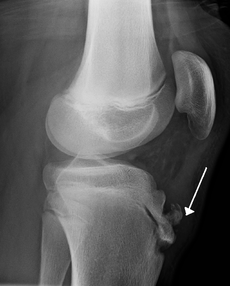Patello-Femoral Syndrome
Patello-Femoral Syndrome is a condition caused by the patella (knee cap) not tracking properly over the femur (thigh bone). The patella normally rides in a groove on the femur. The patella is really a fulcrum – it gives leverage to the big muscles on the front of the thigh. These thigh muscles are called the quadriceps. The quadricep muscles consist of four muscles. With Patella Femoral Syndrome, you get an imbalance in these muscles – usually the lateral or outside muscle over-powers the inner medial muscle – and this pulls the patella out of its normal groove. When the patella doesn’t track properly in its groove, it causes pain under the patella.
Signs and Symptoms: Pain under or around the knee cap which can feel like a pressure, Pain is often worse after activity that involves knee bending – running, stairs, squats, kneeling on the knee, Knee ‘cracks’ or needs to be cracked to decrease pain, Patient cannot sit for long periods of time without straightening out the knee to make it crack. This is called ‘Theatre Sign’ – patients must sit in an aisle seat at the Theatre so that they can straighten out their knee frequently.
Often it is due to flat feet and rolling of the feet in causing the shine bone to roll out and the patella to change its alignment!
Treatment for patella-femoral syndrome can include: A full biomechanical exam to determine the cause. Then possibly: chiropractic to align the patella, feet, hips; Active release to break up adhesions in the tissues, massage therapy, orthotics, at home stretching and strengthening. A patient may be advised to ice or use a brace dependant on the problem.
 |
| X-ray of the knee demonstrating fragmentation of the Tibial tubercle with overlying soft tissue swelling. |





